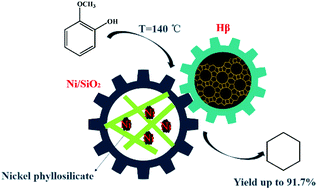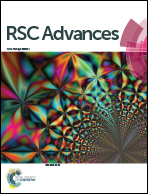Low temperature hydrodeoxygenation of guaiacol into cyclohexane over Ni/SiO2 catalyst combined with Hβ zeolite
Abstract
Hydrodeoxygenation (HDO) of guaiacol to cyclohexane, important for bio-oil upgrading, is usually performed at high reaction temperature (≥200 °C). In this work, low temperature transformation of guaiacol to cyclohexane was achieved at 140 °C over non-noble metal Ni/SiO2 and various zeolites. Among zeolites tested (HUSY, HMOR, Hβ, HZSM-5, SAPO-34), Hβ zeolite exhibited superior catalytic activity due to its appropriate pore structure and acid strength. The open pore with three-dimensional structure of Hβ facilitates the diffusion of guaiacol and intermediates. Meanwhile, weak acid strength of Hβ efficiently reduces the competitive adsorption of guaiacol, and then promotes the dehydration of intermediate 2-methoxycyclohexanol. Moreover, the catalytic performance in guaiacol HDO to cyclohexane is also closely related to Si/Al ratio of Hβ. Owing to its moderate acid density, the maximum yield of cyclohexane reaches 91.7% on Hβ(Si/Al = 50) combined with Ni/SiO2 at 140 °C, which is the lowest temperature ever reported over non-noble metal catalysts.



 Please wait while we load your content...
Please wait while we load your content...